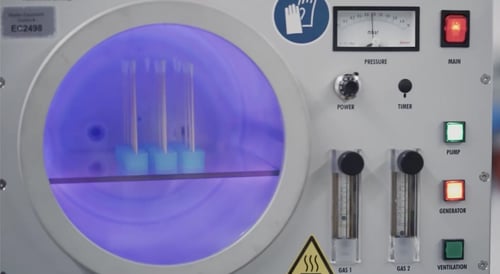
What are the primary frequencies used in plasma surface treatment?
The three main ranges of plasma are 40 kHz, 13.56 MHz, and 2.45 GHz.
40 kHz is the lowest of the Plasma Frequencies. Though it may sound the weakest, a low frequency can make the biggest difference in quality. At 40 kHz, there is the highest ion density of the three main frequencies meaning that there will be more particles of the plasma per square inch than the other two. This will easily increase the efficiency and improve the uniformity of the particles. Although it might be the slowest to etch materials, it will be the best in quality.
In the middle we have the frequency 13.56 MHz. One of the standard frequencies used world wide for industrial, scientific, and medical uses. This frequency is used for a faster etching process, but has to be fine tuned for each piece of material that would be placed in the chamber.
Lastly there is the 2.45 GHz frequency. This is the fastest setting to do any etching, but will require the most energy to operate.
Please visit our plasma etching page for more information.
To learn more about etching, check out our eBook titled "Plasma Etching and Cleaning Strategy for Better Product Quality."